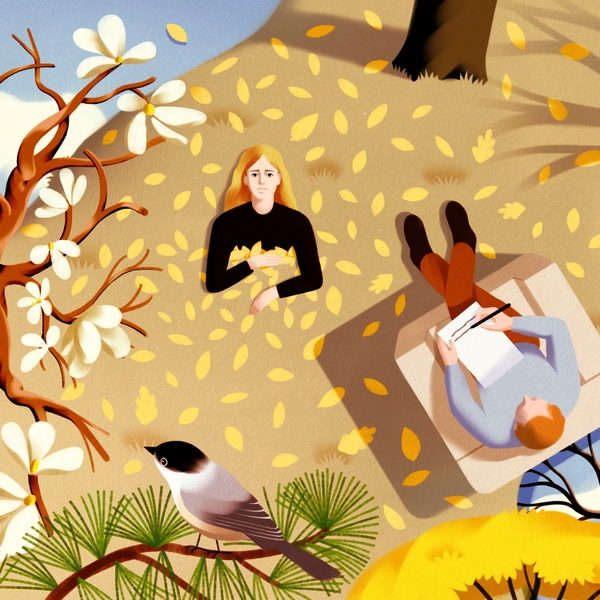Climate Grief Was Clouding My Time șÚÁÏłÔčÏÍű. So I Turned to Ecotherapy.
Therapy on the hiking trail couldnât fix the new normal of Oregon wildfire season, but could it help me grapple with it?
New perk: Easily find new routes and hidden gems, upcoming running events, and more near you. Your weekly Local Running Newsletter has everything you need to lace up! .
Midway through my second ecotherapy session, I was climbing a muddy hill and trying to articulate a particular brand of climate-change-induced loneliness when I heard a squawk. Stopping abruptly on the trail, I looked down into the canyon to our right, then up into the fir canopy above.
âWhat kind of bird was that?â I asked, as if this were a normal question for a therapist. Thomas Doherty paused, tilting his face toward the misty sky.
âIâm not sure,â he said. âI hear a crow, but this is something else.â Craning toward the noise, I became aware of my heaving breath, now as much a part of the morningâs soundtrack as the mystery bird. After a few secondsâ pause, both Doherty and I took out our phones, opened the Merlin Bird ID app, and held our microphones to the sky.
I didnât have time to consider how much of a clichĂ© I had become in my first months of amateur bird-watchingâI was too busy wondering if the appâs Shazam-like feature would track the call. When no answer came, the mystery felt like its own pleasure, a cheery postcard from an unknown friend.
As we continued up the hill, I tried to recall where my train of thought had stopped, but it no longer felt important. I had been talking about suppressing climate sadness because I didnât want to sound like an evangelist or bum my loved ones out. But now I was thinking about the bird, and wasnât that the opposite of doom-brainâtuning in to all that lived around me? This sort of diversion certainly wouldnât happen in a therapy office, but it wasnât a bad thing. The bird had, for a moment, airlifted me out of my anxiety. âBeing outside gets us out of our heads,â Doherty told me when I mentioned it later. âIt keeps us in the present moment, reminding us our bodies are curious and attuned.â
My jeans were speckled with rain and my fingers were cold, but I felt calm. Buoyed, even. As the bird let out another hoarse hoot, I followed Doherty around the bend.


